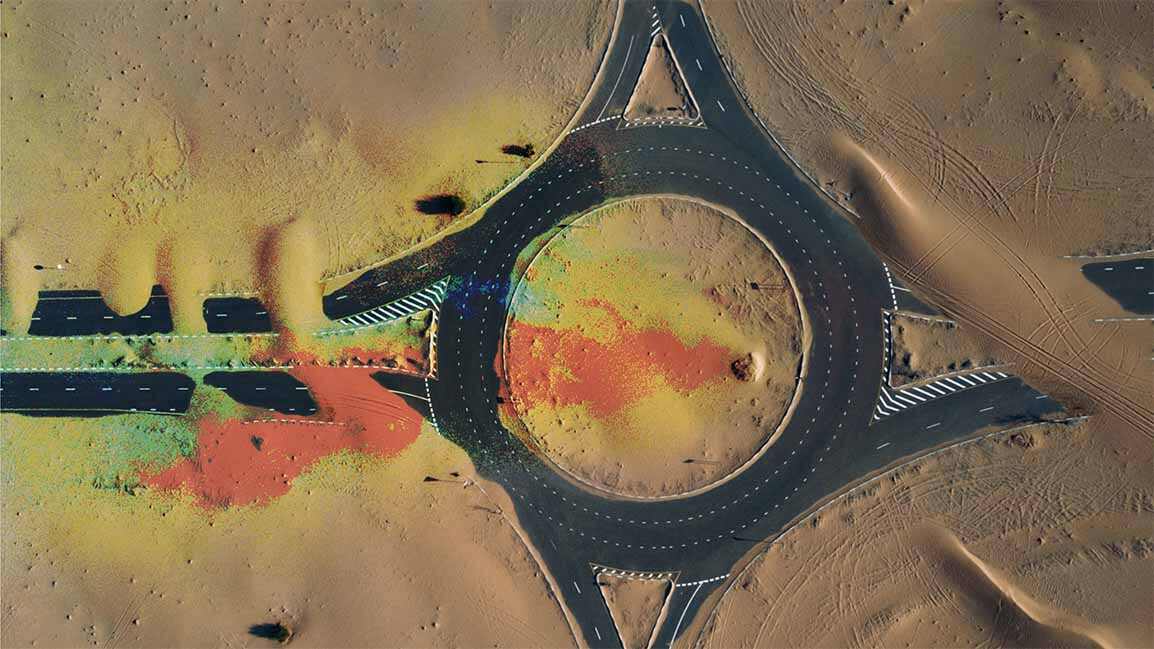- | 9:00 am
The Middle East is witnessing an increase in sandstorms. Find out why
An unprecedented wave of sandstorms is striking the region, sending people to the hospital and grounding flights. Experts blame climate change

Engulfed in an orange blanket of grit, one can see Tom Cruise chasing his enemy in near-zero visibility – a dust storm makes his mission almost impossible to complete. For many in the Middle East who have watched Cruise’s Mission Impossible: Ghost Protocol, envisioning a sandstorm shouldn’t be hard.
“Sandstorms are well-known phenomena in the Middle East,” says Dr Mustafa Khamis, an Environmental Sciences Professor at the American University of Sharjah. However, there has been a significant increase in the frequency of sandstorms across the region, and according to the experts, mainly due to climate change. In less than a month, at least two sandstorms have hit Iraq, Saudi Arabia, Kuwait, and UAE, with health warnings for all the residents.
In May, Iraq was hit by the most intense sandstorm, due to which a national holiday had to be announced, forcing the locals to stay indoors. Iraq media outlets reported that more than 5000 residents had to be hospitalized due to respiratory-related problems.
In the UAE, forecasters at the National Centre of Meteorology issued an alert because of the extreme weather conditions caused by an intense sandstorm. Health experts advised the residents to wear masks to avoid inhaling dust or sand particles. Similar scenes were seen in Saudi Arabia, where the sandstorm hampered the traffic flow as the visibility was reduced.
Causing chaos by sending people to the hospital, grounding flights, and slowing down traffic, why has there been such a sudden increase in sandstorms? And what does it mean for the countries impacted by it?
Dr. Fatin Samara, Professor of Environmental Sciences at the American University of Sharjah & Co-Chair of the UAE Climate Change Research Network, emphasizes the need to understand the link between climate change in the region and the increase in the frequency of sandstorms. According to her, “there is a direct correlation between the increasing urbanization and climate change, specifically the expansive desertification.”
In simpler terms, as the human population has grown, more and more of the natural land is being converted into an urbanized infrastructure of high-rise buildings and highways. This results in desertification. Iran has drained its wetlands for farming, which is known to produce dust.
“The massive increase of desertification is considered the primary cause of frequent rising dust in the world. Desertification is the case of biological and environmental change of the soil and a decline in the fertility due to changing climatic and ecological conditions of that spot or exploitation of natural resources by man,” reports Dust sources on the National Centre of Meteorology website. Meanwhile, a UN report confirms that during the last century, the rate of transformation of land into the desert was estimated at 50,000 square kilometers per year.
INCREASING SANDSTORMS AND CLIMATE CHANGE
An expert in sandstorms research, Dr Samara, who is currently working on a research publication on climate change and its effects on human health, says that at the Intergovernmental Panel on Climate Change (IPCC) 2022 conference, WHO called for more research on the increasing sandstorms and the possible causes, and how it can be related to the extreme climate change. According to the IPCC report, there has been an increase in global temperatures, reaching 1.5 degrees Celsius, and the Middle East shows to be heating up twice as quickly as the rest of the world. Rising temperatures and reported declining precipitation result in more intense sandstorms. The report warns that by 2050, Iraq “will have 300 days of dust storms throughout the year”.
Dr Samara says there is a dire need to understand the correlation between sandstorms and the adverse climate change so that actions can be taken to reverse or minimize the damaging impacts, including health implications.
“Sometimes, due to the heavy weight of sand particles, [sand] does not reach high in the atmosphere. People inhale these sand/dust particles which get lodged in their airways. Sometimes these sandstorms carry extremely fine particles of dust that penetrate deep down into the respiratory tract causing serious respiratory issues in people,” says Dr Juilo Gomez – Seco, Consultant Pulmonologist and Sleep Respiratory Medicine at Fakeeh University Hospital. “Apart from dust particles, sandstorms also bring various allergens which directly impact people’s health.”
“Children, older adults and people with pre-existing pulmonary conditions, smokers, weak immune systems, and allergy-prone individuals are more susceptive to developing health issues and allergies as an effect of sandstorms. Exposure to dust for prolonged periods can also trigger allergic reactions, breathing issues, asthma and contribute to heart attack,” adds Dr Gomez-Seco.
Also, Read how UAE to enhance rainfall using AI model for cloud seeding here.
Having 17 years of experience in pulmonology and specializing in treating a wide variety of respiratory conditions, Dr Gomez-Seco says: “Staying home is the best way to prevent yourself from triggering any allergies caused as a result of severe sandstorms. At home, you can try home remedies like steam inhalation to keep the respiratory tract free of irritation. However, if stepping out becomes necessary, one should ensure to cover their nose, eyes, and mouth. Wear an N95 mask while stepping out. It is advisable to consult with a pulmonologist upon experiencing excessive coughing, wheezing, chest pain, shortness of breath, or running nose.”
The health implications of a sandstorm are numerous. Human-induced desertification and climate change are resulting in the worsening of recurring sandstorms. Experts say climate change, drought and government mismanagement of water resources are responsible for the increase in sandstorms. If action isn’t taken in time, it will only get more severe. To reduce the detrimental effects, concerned personnel need to start planning now.
Read more related impact articles in our impact section here.








































